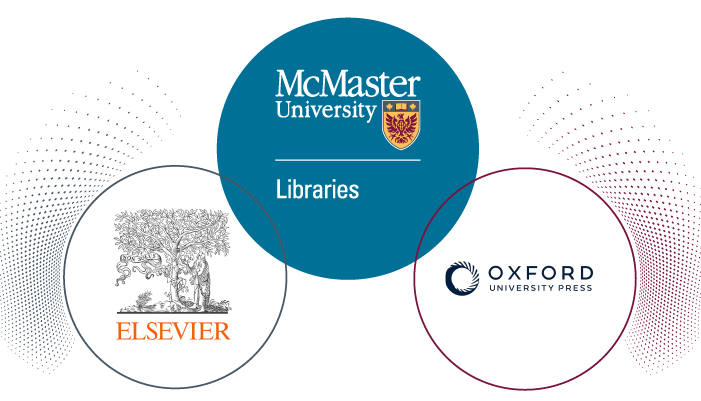UpToDate Access Changes

The Health Sciences Library will soon lose access to the clinical point-of-care tool UpToDate (https://www.uptodate.com/contents/search). We have been unable to provide equitable access to this particular resource across our McMaster teaching sites for several years now. As the Faculty of Health Sciences expanded its teaching and learning opportunities across the region, these inequities were exacerbated. Although we’d hoped to work with the vendor to achieve a license that allows for equitable access both on and off-campus and at our clinical learning sites, it appears that a solution is beyond our financial reach.
To make the transition easier, we’ve included information on some great alternatives to UpToDate:
DynaMed
First up is DynaMed, a comprehensive user-friendly point-of-care tool that combines the most current clinical evidence with guidance from leading experts. Just as its name implies this tool is intended for use at the point-of-care. With its focus on evidence-based medicine, users can access original research, diagnosis and treatment options. DynaMed also includes IBM Micromedex’s summary-level drug information and calculators.
https://hslmcmaster.libguides.com/db/dynamedplus
BestPractice
BMJ’s Best Practice is a clinical decision-support tool with point-of-care and patient consultation at its center. All the information and guidance you need to access, whether that be the latest research evidence, guidelines, or expert opinions, are combined and presented in a clear, step-by-step approach, guiding you through prevention, diagnosis, treatment, and prognosis. With information on 1000+ evidence-based condition and symptom topics across 32 clinical specialty, Best Practice can support you throughout the entirety of the patient journey. Through the evidence-based leaflets and toolkits, international coverage of diagnostic and treatment guidelines organized by geographical area, clinical calculators, and evidence tables, it becomes easy for users to find exactly what they need quickly and efficiently.
https://hslmcmaster.libguides.com/db/bestpractice
Micromedex
IBM’s Micromedex specializes in evidence-based drug content. Micromedex provides access to everything from need-to-know drug, pediatric, disease, lab and toxicology information to comprehensive resources for patient and consumer education. The single interface allows users to search by drug, disease, or toxicology. Patient education information such as drug interactions, IV compatibility, drug comparison, and calculators are also available, in addition to the “Ask Watson” feature which allows users to search by asking natural language questions.
https://hslmcmaster.libguides.com/db/micromedex
Isabel
Isabel is a point-of-care tool that provides users with a list of possible diagnoses to allow physicians to make an accurate final diagnosis quickly and easily. Through improved diagnosis quality, using Isabel leads to more cost-effective care, reduced length of stay, increased patient satisfaction, and more! Isabel flags critical “don’t miss diagnoses,” and diagnoses that could cause significant harm if not considered, ensuring that the patient is receiving the best possible care. Isabel can also be used as both an integrated part of the electronic health record (EHR) system and as a standalone application. Most excitingly, Isabel has seamless integration with DynaMed. The two work together to provide physicians with the evidence-based information they required to best support and care for their patients.
https://hslmcmaster.libguides.com/db/isabel
VisualDX
VisualDX is a diagnostic decision support system designed by clinicians to aid medical professionals in the diagnosis of visually identifiable diseases at the point-of-care. With an image library that reflects disease on all skin types, in addition to a new feature which allows for easier diagnosis for patients with darker skin types, VisualDX makes diagnosis patients easier than ever. When you search a diagnosis, users not only get access to images, but to Sympticons, concise clinical information and ICD codes. There is also a feature that allows users to view adverse conditions that may be caused by a specific drug. These results provide images, evidence, and therapy guidelines.
https://hslmcmaster.libguides.com/db/visualdx
CPS
CPS is Canada’s authoritative source for prescribing and managing drug therapy at the point of care. The platform has readily available information on all Canadian drugs and any issues pulled from the market. CPS also includes access to the Canadian Pharmacists Association’s (CPhA) publications Therapeutic Choices, the Compendium of Pharmaceuticals and Specialties, and Information for Patients, in addition to Lexi-Interact which also appears in UpToDate. Using CPS, you can search by condition or by drug information, as well as having access to a multitude of drug monographs.
https://hslmcmaster.libguides.com/RxTx
To learn more about any of these tools, please contact the library directly (hslib@mcmaster.ca) or visit https://hslmcmaster.libguides.com/ebm.
Resources
Related News
News Listing

McMaster libraries and MacPherson Institute launch generative AI literacy resource for students
Resources
November 19, 2024



